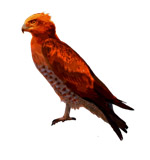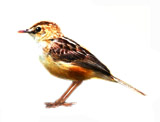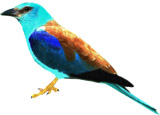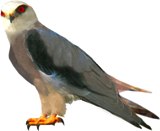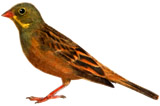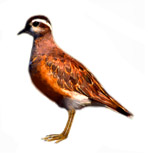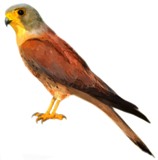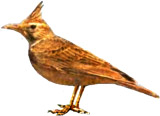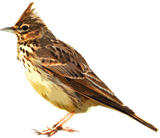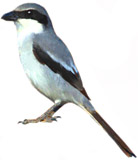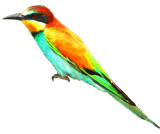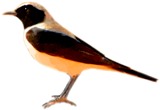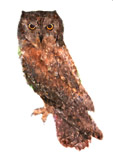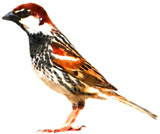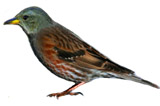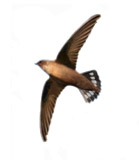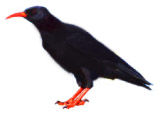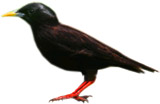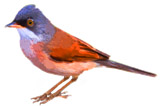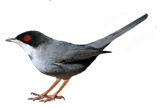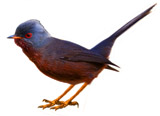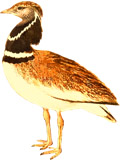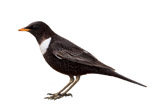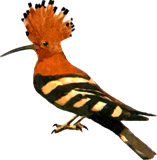HOTSPOT FACTSHEET: VALE SANTO
Location: Vale Santo plateau; Vila do Bispo municipality, Western Algarve | Coordinates: 37° 2′ 55.1574″, -8° 58′ 1.182″ (Lat/Long); 37.048655 N, -8.966995 W (decimal degrees) | Code: VB1 | Completion Time: up to 12-16 hours, for the three Sagres Peninsula hotspots and adjacent areas | Best Time for Birdwatching: April-June and September-November are the best periods; all seasons offer birding opportunities | Protection Status: Natural Park; Biogenetic Reserve; Important Bird Area (IBA); Special Protection Area & Special Area of Conservation (Natura 2000) | Activities: birding; nature walks; cycling, running & other outdoor activities; sightseeing; cultural travelling; extreme sports;
[PLEASE CHECK VALE SANTO’S BIRD SPECIALITIES AT THE BOTTOM OF THIS PAGE] In Vale Santo, the places where birders are most likely to find ground-dwelling species (especially Little Bustard) are the edge zones* established between the grass, scrub and farmland. Throughout the Sagres Peninsula, this near-threatened bird encounters all the types of habitat it needs both for nesting and for sheltering. Its cryptic plumage makes the bustards difficult to find; however, attentive birders will have no problems finding the resident Thekla Larks, which are much more common in Vale Santo than the similar-looking Crested Larks. Vale Santo’s lark party is greatly augmented by the Greater Short-toed Lark from early spring to September-October, the same months that register the occurrence of Tawny Pipits and of the much scarcer Richard’s Pipit, a species that travels all the way from Mongolia and Siberia. From afar, it is difficult to distinguish these different pipits on the basis of specific markings or anatomical features; however, Richard’s Pipit usually hovers just before touching down on the ground, whereas Tawny Pipits usually do not. Pipits join other trans-Saharan migrants on their way to nearby Africa between August and December.
*In ecology, ‘edge effects‘ arise when two or more different habitats within the same ecossystem superimpose – edge zones allow more environmental structure, a fact that greatly increases biodiversity.
During the autumn migration, among the first birds to arrive are the Western Bonelli’s Warbler and that famous (French) gastronomic delicacy, the rather timid Ortolan Bunting. One other migrant is not so shy, but it is generally much rarer: the striking Roller is sometimes found perched on poles, wires or exposed branches while it carefully scans the ground for the next meal, much like the resident Southern Grey Shrikes. Vale Santo is also the best place in Portugal to observe the trusting (but hard to pin down) Dotterel; this unusual plover stages in exposed grassy sites, ploughed areas and fallow. In September, the already varied warbler contingent sees another addition when the resident Dartford and Sardinian Warblers are joined by Subalpine Warblers; this passerine is just a transient migrant, contrary to the Spectacled Warbler, a species that nests throughout the Natural Park in open areas with scattered bushes and trees. In those places where trees and bushes become more prevalent, birders may hear the lovely babbling song of the Melodious Warbler, yet another breeding species that arrives in April with the colourful Bee-eater. In early spring, as the first flowers start to blossom and pollinating insects become more active, a few of those Bee-eaters join the large gatherings of Alpine and Pallid Swifts over the thriving grassland tapestry.
A few raptors, like Peregrine Falcon, Kestrel and Buzzard can also be seen crisscrossing the pristine atmosphere above the low-flying swifts and martins. Despite being a resident species, Crag Martins only move to the more agreeable coast during autumn. Merlins, Hen Harriers and Short-eared Owls also winter in the Peninsula. In contrast, the joyous Red-billed Choughs can be observed year-round in Vale Santo. This is an endangered species in Portugal due to habitat loss and fragmentation: choughs are rupicolous birds (those inhabiting rocky places), and need both the presence of rocky landforms – such as coastal cliffs – and semi-natural pastures to thrive. Places meeting both these requirements have become scarcer in Portugal. Present in the same grass and pastureland habitats across the plateau, Stone-curlews are probably more abundant than Choughs but their mimetic plumage and nocturnal habits make sightings more difficult. Easier to identify are the tiny Zitting Cisticolas, the Spotless Starlings and the quite abundant Serins. Country and local rarities identified in Vale Santo include – among others – American Golden Plover, Rosy Starling, Sociable Lapwing, Red-breasted Flycatcher, Ruddy Shelduck, Lesser Whitethroat, Buff-breasted Sandpiper, and Lesser Redpoll.
The steppe species that inhabit the Peninsula nest on the ground between February and August. Some of these birds have a near-threatened status, or occupy a relatively small natural range. It is therefore of the utmost importance that visitors refrain from hiking across grass and scrubland areas at that time of the year. Roadsides remain the best places to observe introverted species such as Little Bustard, Ortolan Bunting and Eurasian Thick-knee. Contrary to the other two hotspots in the Peninsula, Vale Santo is not a circumscribed viewing point; it is a very wide area instead. Being so, there’s enough latitude to explore several options, including a visit to the gorges and valleys around Praia do Telheiro and Ponta Ruiva; these are excellent places to observe species like Blue Rock-thrush, Dartford Warbler and Ring Ouzel (see also the Cape St. Vincent birding site). From Praia do Beliche to the seemingly abandoned farm buildings depicted on the map above (a place out of a Clint Eastwoodesque-Western Spaghetti), the distance is 2.5 km / 1.6 miles; providing ample opportunities to travel around the Peninsula, several dirt roads radiate from that eerie site. However, to observe the ground-dwelling birds you may also want to drive or hike from Beliche all the way to Vila do Bispo and vice-versa. Another option is to hike through Vale Santo’s pinewoods, or along its edge; actually, in autumn – when there’s a lot of ground to cover – the best option to observe all the numerous species is probably to alternate between the three main hotspots throughout the day.
Budens Marsh (Paul de Budens): Extending for about 1.3 square kilometers between Salema and Burgau, this little known marshy area is located at the mouth of a small stream on Boca do Rio Beach. The freshwater stream widens considerably just before reaching the secluded beach, a fact that creates a small alluvial fan. In the past, this fertile plain was in reality a large rice paddy inhabited by otters; these days, however, the vegetation cover is mainly composed of reeds, bulrushes (genus Typha) and sedge, whose soft colour contrasts with a backdrop composed of ochre and dark-green hills. There you’ll find the Mediterranean Turtle basking in the sun, as well as passerines like the Iberian Chiffchaff, the Great Reed Warbler, the Waxbill, the Zitting Cisticola and the Sardinian and Melodious Warblers. Budens Marsh is one of just a few locations in the Algarve where Savi’s Warbler is found on a regular basis. It is also believed that the Little Bittern and the Purple Heron occasionally nest on this marsh. Please check directions to this birding site on the map above.
Torre de Aspa: Reaching a height of 160 meters (about 525 feet), Torre de Aspa has some of the highest sea cliffs in the Algarve. This place offers a great viewing point over a large stretch of the Vicentine Coast. Seventy or sixty years ago, the Algarve was still a remote and scarcely populated region. The deserted Alentejo plains and the rugged landscape of the Algarvian Serra were formidable obstacles for those wanting to reach or to leave the Algarve (in fact, Portuguese Kings traditionally held the title “King of Portugal and the Algarves“, a fact demonstrating the region’s distinct status). That goes to say that oftentimes the people of Algarve had to take care of themselves when under attack. Military reinforcements would not come speedily. As expected, the most serious threats were assault parties coming from the sea, and that’s why there are so many fortresses along the coast. Cities were also quite small and foreign attackers often outnumbered defenders. Arab corsairs, Spanish troops and English looters all harassed the Algarve throughout the centuries; Sir Francis Drake, for instance, pillaged the village of Sagres in 1587, killing many of its inhabitants at a time when Portugal was part of the Iberian Union (and therefore considered as an enemy for breaching the Treaty of Windsor). Torre de Aspa was a fundamental part of the large defensive network protecting the Algarvian shores. There are no traces, however, of the original, 16th-century lookout structure. At the time, a big fire was lit whenever enemy ships were sighted and today there are still some remnants of those huge campfires. On the massive cliff there’s also an old trig point and a building that has been rendered obsolete by the Portuguese Navy’s modern technologies. However, from that vantage point you will clearly realize why Torre de Aspa was such a great lookout: the horizon is boundless, the light is intense, the winter winds may knock you to the ground, and you’re just a tiny speck on a colossal rock. The dirt road leading to Torre de Aspa is quite rough but the viewing point is easily and safely reachable by car. You should however keep a safe distance from the edge of the cliff. Please check the map markers above to get directions. See also Castelejo Trail.
Ponta Ruiva Beach (Praia da Ponta Ruiva): Just north of Telheiro, and possessing a half-moon shape, the pretty bay where this unblemished beach is located creates very reliable surf conditions at all stages of the tide. It is also a somewhat remote place. Throughout most of the year Ponta Ruiva is totally deserted. Its Portuguese name (“Red Headland Beach”) originates from a reddish sail-like stack composed of Triassic sandstone. The dirt road leading to the beach is more suitable for off-road vehicles than regular cars, but there’s always the option to just hike when the going gets rough; it is also a steep way down from the top of the cliff to the actual sand strip. Please keep in mind that on Ponta Ruiva there are no toilettes, no bars, no lifeguards. Nada, only raw nature.

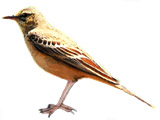
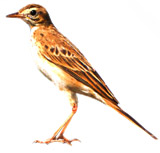
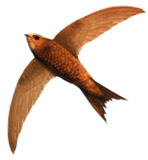
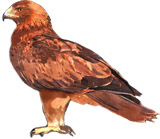
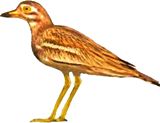
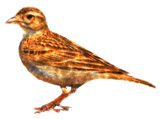
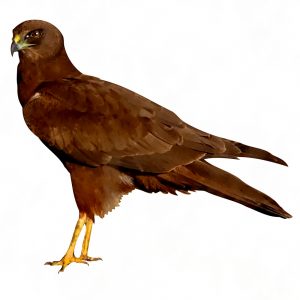 Circus aeruginosus
Circus aeruginosus